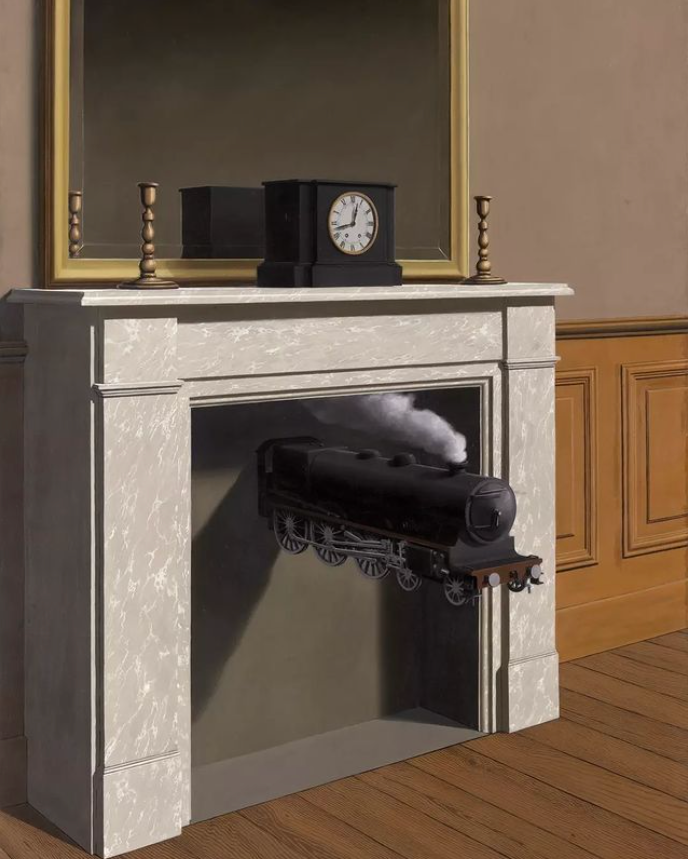‘If the dream is a translation of waking life, waking life is also a translation of the dream.’ – René Magritte
Magritte believed that all beings and objects are mysterious. In ‘Time Transfixed’ we see a mirror, a clock, and two candlesticks on a mantelpiece. Magritte felt that mirrors provide surrealism in the sense that they are a false reflection of reality, and so he often included mirrors or reflections in his paintings. Although we find both the clock and one candlestick reflected in the mirror, the second candlestick, and the rest of the room, are not reflected. We also find the surprising juxtaposition of a train protruding from the fireplace, shrunk to fit inside this strange scene. The tiny engine races out into the stillness of a sparsely furnished dining room, its smoke neatly floating up the
chimney, as if to suggest smoke produced by a fire. It’s in the surprising juxtapositions, shift of scale and every day, unrelated objects that mystery, magic, and humour merge in Magritte’s work.

